#Kika Markham
Explore tagged Tumblr posts
Text





TOP 5 FIRST-TIME WATCHES OF SEPTEMBER & OCTOBER 2024
1. OUR LITTLE SISTER (海街diary) (2015, dir. Hirokazu Kore-eda) 2. 84 CHARING CROSS ROAD��(1987, dir. David Hugh Jones) 3. LES DEUX ANGLAISES ET LE CONTINENT (1971, dir. François Truffaut) 4. MARCELLO MIO (2024, dir. Christophe Honoré) 5. JULIETTE AU PRINTEMPS (2024, dir. Blandine Lenoir)
#ranking list#our little sister#84 charing cross road#les deux anglaises et le continent#marcello mio#juliette au printemps#suzu hirose#haruka ayase#anne bancroft#kika markham#stacey tendeter#chiara mastroianni#izïa higelin#blandine lenoir
37 notes
·
View notes
Text
"THE WOMAN IN WHITE" (1997) Review

"THE WOMAN IN WHITE" (1997) Review
I have very little familiarity with Victorian novelist, Wilkie Collins and his work. One, I have never read any of his novels. And two, I had only become aware of his works and adaptations of his work some two to three years ago. One of those adaptations happened to be the 1997 television movie, "THE WOMAN IN WHITE".
Although a longtime viewer of PBS's "MASTERPIECE THEATER", I had never seen this version of Collins' 1859-60 novel when it first aired on U.S. television, years ago. It took streaming television for me to finally stumble across this movie. Recalling how much I had enjoyed it, I did a recent re-watch. Had my feelings for this production changed? Good question.
"THE WOMAN IN WHITE" was a BBC-TV adaptation of what is regarded as an early example of a mystery novel. Half-sisters Marian and Laura Fairlie live with their hypochondriac uncle, Mr. Fairlie, at his estate called Limmeridge. He hires a young artist named Walter Hartright to serve as their art tutor. Upon his arrival in the neighborhood, Walter unexpectedly meets a young woman dressed in white, who acquires about his plans to stay at Limmeridge. When he finally meets the Fairlie sisters, Walter realizes that Laura bears a strong resemblance to the woman he had earlier encountered. Laura and Walter develop an attraction between them, but Marian nips the potential romance in the bud when she reveals Laura's engagement to a family acquaintance, a landowner named Sir Percy Glyde. When Marian receives a warning about Sir Percy, she and Walter deduces it came from the woman the latter had encountered on his first night - a local named Anne Catherick. While heading into the woods to meet with Walter and track down Anne, Marian spots a servant woman running out of the woods, with Walter close behind. She accuses him of attempted rape. Walter is dismissed by Mr. Fairlie and Laura proceeds with her marriage to Sir Percival.
I have always regarded Collins' 1859-60 novel as a personal favorite. If I must be blunt, I have always preferred it over his other famous novel, "The Moonstone". This adaptation of "The Woman in White" is the shortest I have seen, with a running time of 125 minutes. I thought Davie Pirie of adapting the novel for a television movie. He had more or less retained the main narrative of Collins' novel. Although Marian and Laura remained half-sisters, the two characters shared the same parents, instead of the same mother. And I believe he made one improvement by allowing Marian to have a bigger role in the story's third act, which featured the mystery's resolution and the villain's downfall. More importantly, the shorter running time spared me of the final aspects of Count Fosco's arc, which I believe had unnecessarily dragged Collins' novel.
However, I do have a few complaints about Pirie's changes. I thought he had unnecessarily magnified Sir Percy Glyde's villainy by making him a rapist. He had raped Anne Catherick, when she was a girl. Although I have no problems with Pirie expanding Marian's role in defeating Sir Percy in the third act, I had a big issue with making her defeat her brother-in-law by locking him in a burning church. Pirie had transformed Marian into a murderer. And this was not my idea of expanding her role into Sir Percy's defeat. And unless I had missed that moment, I do not recall the movie revealing Count Fosco's reason for helping Sir Percy achieve his goal. Worse, the movie failed to reveal his fate before the movie's last scene.
Although published between 1859 and 1860, Collins' novel was set a decade earlier, between 1849 and 1850. Yet, "THE WOMAN IN WHITE" - at least this version - seemed to be set during the early or mid 1870s. I have no problem with this. This new setting still adhered to theme of a woman's property and marriage, considering it was set before the Married Women's Property Act 1882. Odile Dicks-Mireaux's costumes had received a BAFTA (British Academy Television) Award nomination and did an excellent job in reflecting not only this period setting, but also the characters' social standing:


I do not have any issues with the performances featured in "THE WOMAN IN WHITE". The television movie featured more than competent supporting performances from the likes of Susan Vidler, John Standing, Adie Allen, Kika Markham, Ann Bell and especially Corin Redgrave and Nicholas Woodeson. This adaptation of Collins' novel featured the second time Ian Richardson portrayed the hypocondriac Mr. Fairlie. He had portrayed the same character in the 1982 miniseries. Which performance did I regard superior? I cannot answer that. I would have to watch the older version. But I cannot deny that Richardson gave a very entertaining and fascinating performance as the unreliable Mr. Fairlie. I found Simon Callow equally fascinating as Sir Percival's mysterious companion, Count Fasco. I also have to give credit to the actor for portraying a non-English character without resorting to exaggerated gestures and an accent.
Andrew Lincoln gave an excellent performance as the emotional artist Walter Hartright. It only seemed a pity that his screen appearance and later, his role, had been limited. If I had my choice for the best on-screen Sir Percival Glyde I have seen, I would choose James Wilby's interpretation. His portrayal of the story's main villain struck me as very skillful and surprisingly subtle. I say surprisingly, considering that his Glyde's villainy had been magnified in compared to the literary and other on-screen versions. Justine Waddell gave a quiet, yet competent performance as Laura Fairlie, the catalyst and target in this mystery. Ironically, the heart and soul of Collins' story was Marian Fairlie (Halcombe in the other versions). The showrunners selected the right woman for the job, namely Tara Fitzgerald. She was superb as the forthright and emotional Marian, whose determination to protect her younger sister, led her into situations she never thought she would find herself in. Fitzgerald not only did an excellent job of portraying Marian's emotional connection to her sister, but also her ruthless determination to save the latter.
Overall, "THE WOMAN IN WHITE" proved to be an excellent adaptation of Wilkie Collins' 1859-60 novel. Due to its running time suited for a movie, screenwriter Davie Pirie made changes that either had no damaging impact and improved Collins' story. But a few of the screenwriter's changes did not serve the narrative, as well. However, one of the BAFTA TV Awards nominations for "THE WOMAN IN WHITE" proved to be Best Drama Serial. Thanks to Pirie's transcript, Tim Fywell's excellent direction and a first-rate cast led by Tara Fitzgerald and Justine Waddell, I believe the miniseries deserved that nomination.

#the woman in white#the woman in white 1997#wilkie collins#tara fitzgerald#justine waddell#andrew lincoln#james wilby#ian richardson#john standing#simon callow#corin redgrave#victorian era#davie pirie#tim fywell#susan vidler#nicholas woodeson#adie allen#kika markham#ann bell#masterpiece theater#period drama#period dramas#costume drama
5 notes
·
View notes
Text
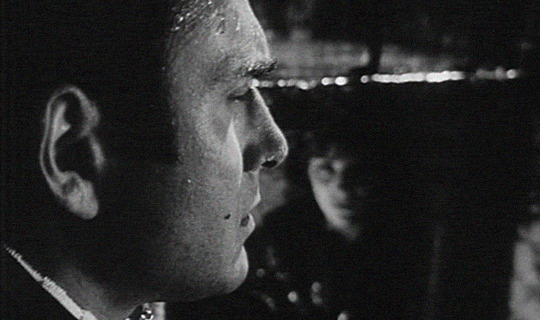


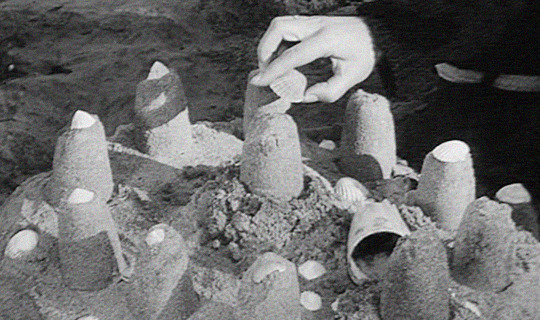
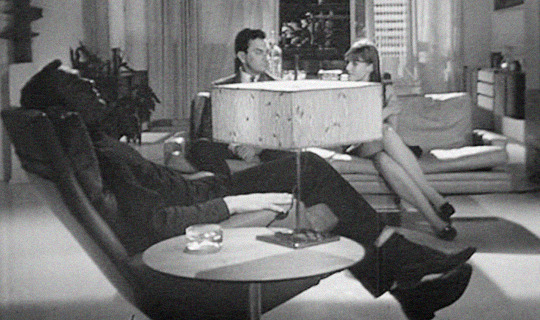
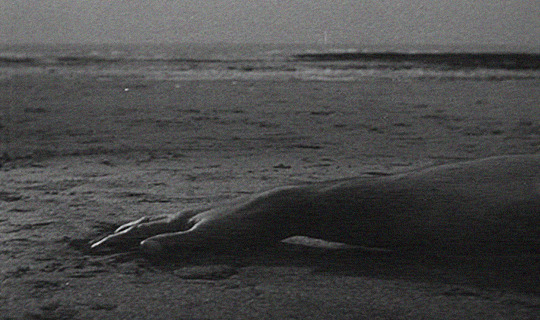
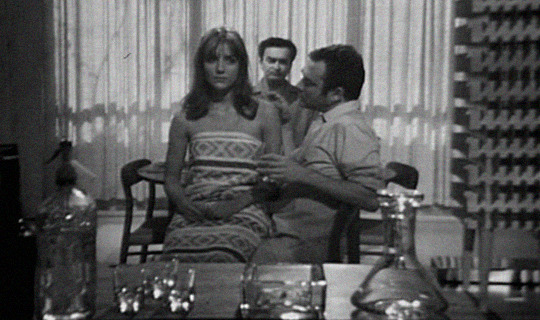


THE BASEMENT (1967) by Harold Pinter
5 notes
·
View notes
Text
Outland | Episode 423
New Post has been published on https://esonetwork.com/outland/
Outland | Episode 423

Jim reflects his first viewing of a classic Sci-Fi from 1981 from Director Peter Hyams – “Outland,” starring Sean Connery, Peter Boyle, Frances Sternhagen, James B. Sikking, Kika Markham, Nicholas Barnes, Clarke Peters, and John Ratzenberger. A Federal Marshall assigned to a mining outpost on Jupiter’s third moon, Io, is faced with a drug smuggling operation that is taking the lives of several workers. Find out how he faces up to incredible odds on this episode of MONSTER ATTACK!, The Podcast Dedicated To Old Monster Movies.
#1981 Science Fiction Film#Clarke Peters#ESO Network#Frances Sternhagen#geek podcast#High Noon in Outer Space#James B. Sikking#Jim Adams#John Ratzenberger#Kika Markham#Monster Attack!#nerd podcast#Nicholas Barnes#Old Monster Movie#outland#Peter Boyle#peter hyams#Sean Connery
1 note
·
View note
Text

Outland, Hungarian lobby card. 1981
1 note
·
View note
Text
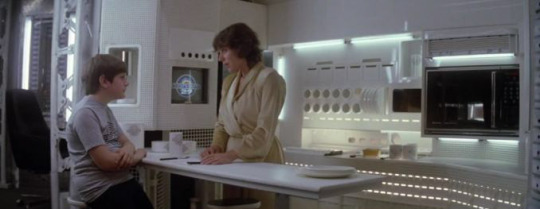
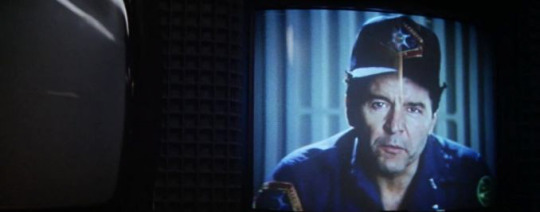
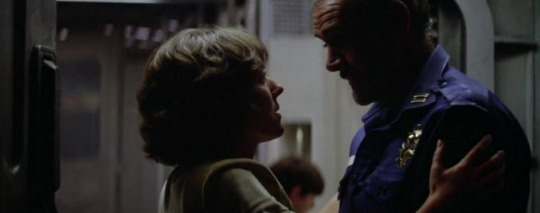

o u t l a n d, 1981 🎬 dir. peter hyams 'Family'
#film#sci fi action#outland#outland 1981#peter hyams#sean connery#Kika Markham#Nicholas Barnes#Family
0 notes
Text


Stacey Tendeter, Jean-Pierre Léaud et Kika Markham dans “Les Deux Anglaises et le Continent” de François Truffaut (1971) - adapté du roman éponyme d'Henri-Pierre Roché (1956) - octobre 2024.
22 notes
·
View notes
Video
youtube
Space Horror Festival : Day 4 Outland (1981)
Discussing the 1981 Space Horror Thriller Film : Outland
Starring : Sean Connery, Frances Sternhagen, Peter Boyle, James Sikking, Kika Markham, Clarke Peters, Nicholas Barnes, Steven Berkoff, John Ratzenberger, Manning Redwood
Director : Peter Hyams Writer : Peter Hyams My Score 9/10
IMDB : https://www.imdb.com/title/tt0082869/ Trailer : https://www.youtube.com/watch?v=mYc2GQyrAlw&t=0s
My IMDB : https://www.imdb.com/user/ur48636572 My Letterboxed : https://letterboxd.com/Redrusty66/ My Poetry : https://allpoetry.com/Redrusty66
#horror #review #mutant #apacolypse #survival #reaction #film
0 notes
Text


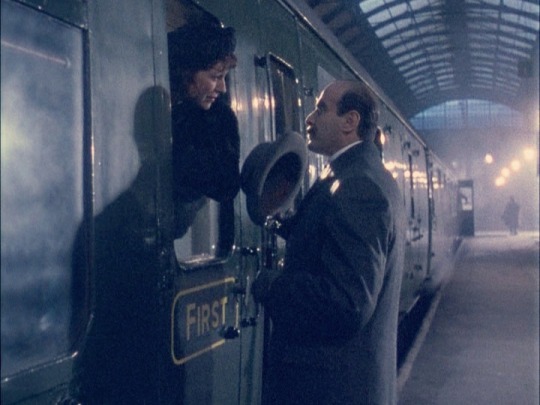


Hercule Poirot & Vera Rossakoff
#David Suchet#Kika Markham#Hercule Poirot#Vera Rossakoff#Poirot#The double clue#A pista dupla#Ahhh esse ep!#Muito bommmm!#Sensacional ver o Poirot#caidinho pela madame la comtesse!#Awww#Hahaha
11 notes
·
View notes
Photo


les deux anglaises et le continent (1971) dir. francois truffaut
#jean-pierre leaud#kika markham#francois truffaut#les deux anglaises et le continent#two english girls#horror films#two english girls francois truffaut#movies#filmstills#eszti's screenshots#moviestills#1970s cinema#french cinema
85 notes
·
View notes
Photo

Jean-Pierre Léaud and Kika Markham in Two English Girls (François Truffaut, 1971) Cast: Jean-Pierre Léaud, Kika Markham, Stacy Tendeter, Sylvia Marriott, Marie Mansart. Philippe Léotard. Screenplay: François Truffaut, Jean Gruault, based on a novel by Henri-Pierre Roché. Cinematography: Néstor Almendros. Production design: Michel de Broin. Costume design: Gitt Magrini. Music: Georges Delerue. Late in his life, Henri-Pierre Roché wrote two semi-autobiographical novels about his life and romantic entanglements in the artistic circles of Paris at the turn of the 20th century. Since François Truffaut had his first great success as a director with one of them, Jules and Jim (1962), it's not surprising that he turned again to Roché for inspiration almost a decade later in Two English Girls. Both are about romantic triangles, though with a woman and two men in the first film, and a man and two women in the second. But where Jules and Jim is loose and larky, Two English Girls is slow and stately, its characters stewing in their frustrations and uncertain desires. Part of the difference may lie in the fact that the pivotal character in the first film is Jeanne Moreau and in the second film it's Jean-Pierre Léaud. Both are remarkable actors, but Moreau centers the film in an element of mystery that gets diffused when Léaud becomes the protagonist, forced to deal with his attraction to two very different sisters. We know instantly why Jules and Jim are so fascinated by Moreau's Catherine, but in Two English Girls the difficulties among Claude (Léaud), Ann (Kika Markham), and Muriel (Stacy Tendeter), centering in large part on sexual morality, are not so provocatively drawn. So the tension among the figures in the triangle goes a little slack in Two English Girls, which at some point turns into a meditation on the differences in nationality and religion (or the lack of it). Roché's novel was titled Les deux anglaises et le continent, emphasizing the Channel-wide gap between the characters. ("The continent" is the Brown sisters' epithet for Claude, erecting a kind of geographical barrier reminiscent of the one between Henry James's Americans and Europeans.) Two English Girls is beautifully filmed by Néstor Almendros, and it has a lovely unobtrusive score by Georges Delerue (who also appears on camera in the role of Claude's business agent), but Truffaut's adaptation, relying heavily on voiceover narration, never overcomes a lack of dramatic incident inherent in the source. It takes patience and concentration to fully appreciate the intricacies of the relationships in the film.
1 note
·
View note
Photo










Agatha Christie’s Poirot #26, “The Double Clue” (1991)
#agatha christie's poirot#poirot#the double clue#david suchet#hastings#hugh fraser#kika markham#miss lemon#pauline moran
44 notes
·
View notes
Photo

#outland#science fiction#action#western#movies#1980s#1981#sean connery#peter boyle#frances sternhagen#james b sikking#kika markham#movie posters
88 notes
·
View notes
Photo





Les Deux Anglaises et le Continent, dir. François Truffaut, 1972.
#Les Deux Anglaises et le Continent#François Truffaut#Jean-Pierre Léaud#Kika Markham#Stacey Tendeter#Cinema#french cinema
459 notes
·
View notes
Photo

Bad movie I have Franklyn 2008
#Franklyn#Recorded Picture Company#Eva Green#Ryan Phillippe#Sam Riley#Bernard Hill#James Faulkner#Stephen Walters#Art Malik#Susannah York#Richard Coyle#Kika Markham#Helmut Christian Kirchmeier#Hilary Sesta#Matthew Flynn#Janetta Morrow#Doug Allen
7 notes
·
View notes
Photo










Noroît | Jacques Rivette | 1976
129 notes
·
View notes